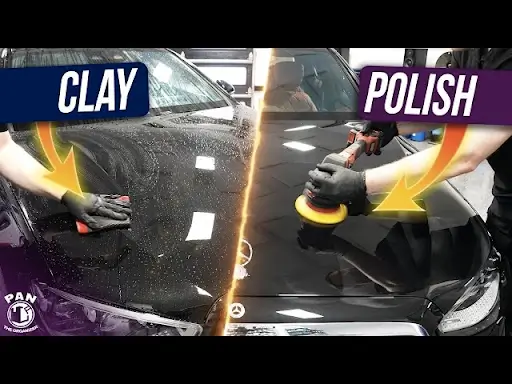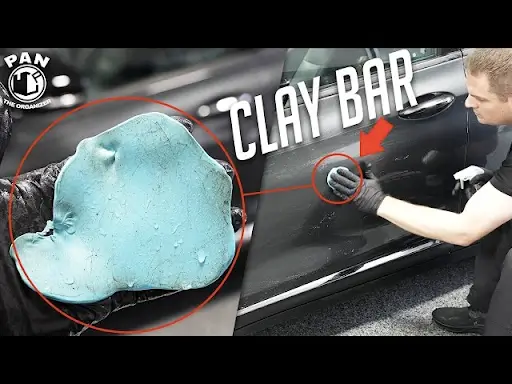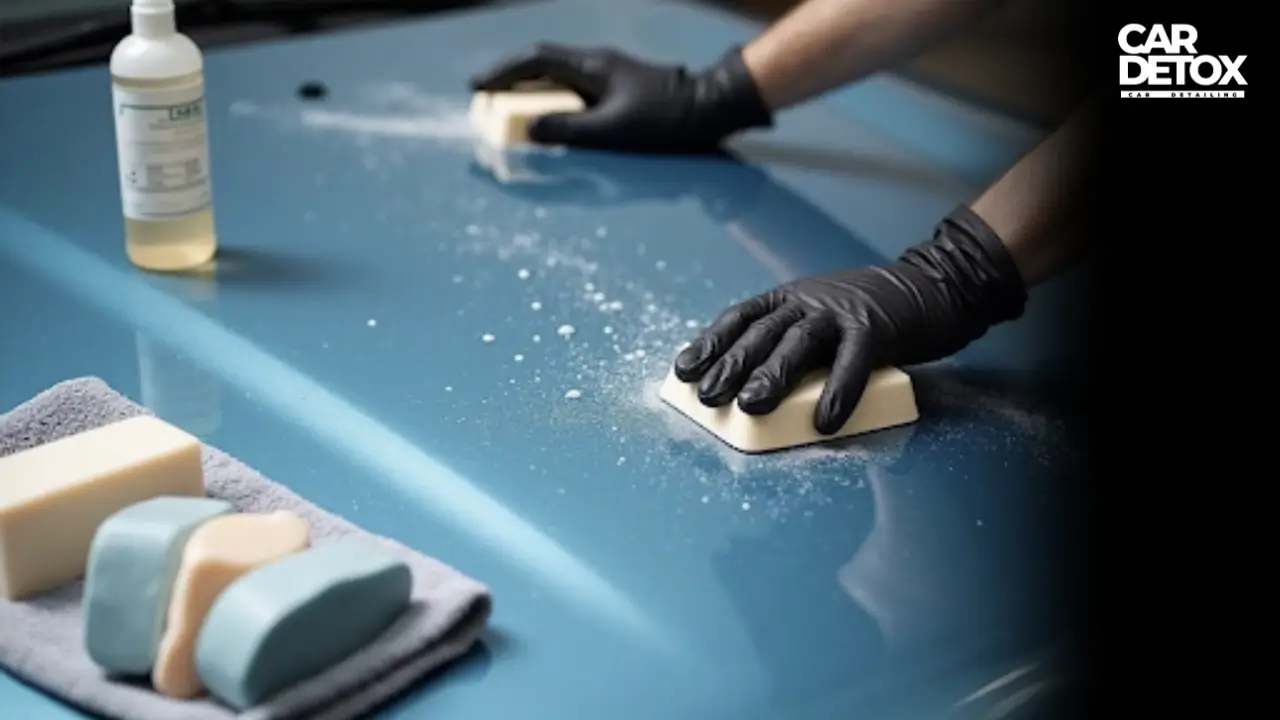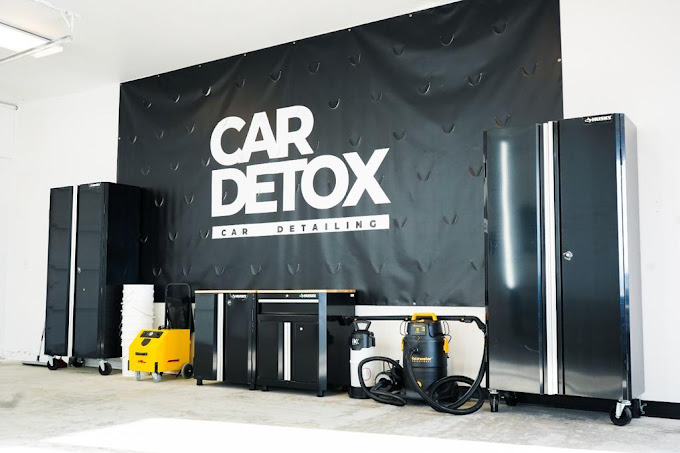Have you ever felt those tiny bumps on your car right after washing it? You might wonder if clay bar treatment makes sense when regular washing seems fine. The truth will amaze you.
Regular washing can't match what a clay bar treatment does. It removes stubborn contaminants that normal cleaning misses. These particles don't just sit on top - they can work through your clear protective coat and reach your car's paint. The damage can even extend to the metal frame. The clay's sticky surface grabs onto tough contaminants like iron filings, insect residue, airborne pollutants, and brake dust. It pulls them right out of your clear coat.
My years as a professional detailer have shown me amazing results. A simple hour-long treatment can transform the appearance of any vehicle. The process also leaves your paint surface ready for waxing or sealants. This means better protection and an incredible shine.
Let me walk you through this piece. You'll learn what clay bar treatment is, the best times to use it, and if it's worth your investment.
Do You Need Clay Bar Treatment?

Car owners often believe a good wash leaves their vehicle spotless. The reality tells a different story - tiny contaminants stick to your clear coat and stay there even after the most careful wash. These hidden enemies can damage your car's paint over time if you don't address them.
How to test if your paint is contaminated
A simple "baggie test" helps you know if your car needs clay bar treatment. Just wash your car, put your hand in a plastic sandwich bag, and run it across different parts of your paint. The bag makes your touch more sensitive and helps you feel what your bare hands might miss. Your paint is clean if it feels smooth as glass. But if you notice any rough spots or tiny bumps, your paint has picked up contaminants.
Your car's appearance also gives you clues. A dull finish or lack of shine despite regular washing might point to contamination.
What is clay bar treatment used for?
Special detailing resin makes up clay bars that pull stubborn contaminants from your paint. These bars tackle industrial fallout, brake dust, rail dust, tree sap, pollution particles, and road grime. Clay bars work better than regular washing or polishing because they remove these stuck particles without hurting your paint.
The main benefits include:
- A clean surface that helps waxes and sealants stick better
- Glass-like smoothness on your paint
- Protection from damaging corrosive contaminants
- Better shine and a more vibrant car color
Is a clay bar worth it for every car?
Clay bar treatment works great, but you don't always need it. Most experts say twice a year works for average cars. Your situation might be different based on:
- Cars parked outside or driven near factories need more treatment
- New cars can use clay bar treatment, too, even when they look perfect
- Garage-kept cars or those driven in cleaner areas might need fewer treatments
Clay bar treatment matters most before you apply protection like wax or ceramic coatings. These products won't stick right to dirty surfaces, so skipping the clay bar step can make them less effective.
Step-by-Step Guide to Clay Bar Treatment

The right preparation and technique separate average results from professional-quality clay bar treatment. You'll get that glass-like finish without damaging your paint by doing this.
Prepping your car before claying
Start by washing your car well from top to bottom with a pH-balanced car shampoo. This removes loose dirt and grime. A clean surface prevents scratches during the claying process. Dry your car with a clean microfiber towel.
The "baggie test" helps detect remaining contaminants. Put your hand in a plastic sandwich bag and run it across your paint. Pick a shaded area to keep the lubricant from drying too quickly.
Using the right clay and lubricant
Your contamination level determines which clay bar to use:
- Heavy-duty clay for badly neglected vehicles
- Medium-duty for moderately contaminated surfaces
- Light-duty for minimal contamination or show cars
Break off a palm-sized piece of clay and shape it into an oval. Keep the rest of the clay sealed to stay clean. Add plenty of lubricant to your working area and clay bar. You can use a dedicated clay lubricant, quick detailer, or mix a rinseless wash with water.
Work in small 2' x 2' sections and glide the clay back and forth with light pressure. Stay away from circular motions that create swirl marks. Fold and knead the clay to get a fresh surface once it looks dirty. Throw the clay away if you drop it.
Post-treatment care and protection
Most pros suggest washing your car again after clay bar treatment. This removes any leftover residue or loose contaminants. Your paint now has the perfect foundation for more treatments.
Clay can cause micro-marring, so polishing your paint will bring back maximum gloss. Add protection with quality wax, sealant, or ceramic coating to your clean surface. This step matters because clay removes old protective layers along with contaminants.
DIY vs Professional Clay Bar Detailing
The choice between DIY clay bar treatment and professional service depends on how skilled you are, the time you have, and your budget.
Pros and cons of doing it yourself
A DIY clay bar treatment saves you money. You'll spend about $20-$50 on materials. On top of that, it gives you a sense of pride to take care of your car yourself. The process needs patience, though. You'll have to be precise, and it takes time. Your paint job could get scratched if the clay picks up dirt from the ground, so technique matters a lot.
When to hire a professional detailer
You should think about professional help if your car's paint needs serious work or if you're new to detailing. Professional detailers know their stuff and use industrial-grade products that work better than what you'd find in stores. Their expertise matters, especially when you have special finishes like matte paint that need careful handling.
Cost comparison and time investment
Professional clay bar work runs between $100-$300 based on your car's condition. Complete packages with clay bar service cost $349-$425 for bigger vehicles. The upfront cost is higher than DIY, but pros work faster. They'll finish in hours what might take you a full day. The final decision comes down to your skill level and available time.
Long-Term Paint Care After Clay Barring
Clay bar treatment gives you a pristine canvas. Your aftercare routine determines how long these benefits will last. You need strategic planning and consistent attention to maintain your newly smoothed finish.
How long does a clay bar treatment last?
Clay barring benefits usually last 2-3 months in normal conditions. Most detailing experts suggest clay barbing your car two to three times a year if you drive it daily. Your car might need more frequent treatments if it stays outdoors or you drive in industrial areas. Garage-kept cars need only once or twice yearly treatments. The duration largely depends on your environment, driving habits, and how often you wash and wax.
When to reapply wax or sealant
Clay strips away previous protective layers along with contaminants. Your paint needs immediate protection after the treatment. Shield your newly decontaminated surface right away with a quality wax, sealant, or ceramic coating. The best results come from reapplying wax or sealant every few months. Ceramic or graphene coatings protect longer, and high-quality graphene options can last six months to over a year.
Routine maintenance tips
pH-balanced car shampoo helps preserve your paint's condition between clay treatments. Use a high-strength decontamination shampoo every 6-8 weeks to remove embedded contaminants without clay barring. You should reapply your preferred last-stage protection after using these stronger cleaners. A protective coating (wax, ceramic, or graphene) helps minimize contaminant bonding and extends the time between clay bar treatments.
Conclusion
Clay bar treatment is a vital step in proper vehicle maintenance that many car owners tend to skip. My experience as a professional detailer has shown amazing transformations in vehicles after this simple yet effective treatment. Regular washing alone can't match the glass-like finish you get after removing embedded contaminants.
The decision between DIY and professional service comes down to your comfort level, time, and budget. DIY saves money, but professional detailers offer expertise and efficiency that often justify their cost. Keep in mind that protection right after treatment is essential since clay removes both contaminants and previous protective layers.
Clay bar treatment takes time and resources, but the results are worth it. The improved shine, smoother surface, and better protection make this process valuable for any serious car care routine. A well-maintained vehicle's appearance goes beyond looks - it helps preserve its value and extends the paint's life substantially. Trust Car Detox to provide comprehensive, high-quality detailing that protects and revitalizes your vehicle. Book your appointment today for exceptional service and lasting results
FAQs
It depends. I know people who do it every couple of months, and others who barely touch it once a year. Two or three times a year is a decent ballpark for most, but it’s less about the calendar and more about how the paint feels. Run your hand over it after a wash; if it feels rough or gritty, it’s probably time. And if you park outside a lot, especially near trees or factories, you’ll need it more often than someone with a garaged car.
If you rush it or use dirty clay, yes. If you do it right, no. The trick is to keep the clay clean. If you drop it, throw it away, no matter how clean it looks. That’s the number one mistake I see people make: dropping the clay, shrugging, and keeping going, and that’s when scratches happen.
Think of it like deep cleaning your skin, washing your face gets the obvious dirt, but exfoliating gets the stuff stuck in the pores. Same with your car. Clay pulls out the tiny, stubborn contaminants that soap can’t touch: tar, sap, industrial fallout… all that junk that builds up over time. Afterward, the paint feels smooth as glass, and wax or sealant will bond better. Plus, the color pops more. The first time I did it, I couldn’t stop running my hand over the hood.
The clay doesn’t just grab dirt; it also removes the protective wax or sealant you had before. That means bare paint, which is basically an open invitation for sun, water, and everything else to mess with it. Whether you’re into traditional wax, a sealant, or a ceramic coating, just get something on there right after you’re done.
Revive your ride anytime, anywhere
Schedule AppointmentQuestions? Call us now!






